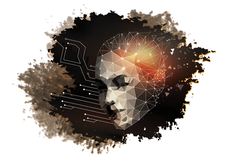Create diagrams with Dia
Perfect Presentation

If you need to make the occasional diagram, Dia gives you professional results with a minimal learning curve.
Diagrams make it easier to an understand complex issues. Creating such graphics using LibreOffice Draw or Gimp can quickly test your patience, as these programs offer an extremely large number of functions, which requires a massive learning curve.
For the occasional diagram, what you really need is an easier-to-use solution that gives usable results fast. With Dia Diagram Editor [1], professional-looking graphics and diagrams can be designed quickly with hardly any training.
Installation
Dia, which is based on the GTK+ toolkit, can be found in popular Linux distribution's repositories and set up with the respective package manager. You will typically get the latest available version since the current version, Dia v0.97, dates back to 2013. You can also find other (including older) versions on SourceForge, including various BSD derivatives, macOS, and Windows. Once installed, you will find Dia in the Applications section of your desktop's main menu.
[...]
Buy this article as PDF
(incl. VAT)
Buy Linux Magazine
Subscribe to our Linux Newsletters
Find Linux and Open Source Jobs
Subscribe to our ADMIN Newsletters
Support Our Work
Linux Magazine content is made possible with support from readers like you. Please consider contributing when you’ve found an article to be beneficial.

News
-
Parrot OS Switches to KDE Plasma Desktop
Yet another distro is making the move to the KDE Plasma desktop.
-
TUXEDO Announces Gemini 17
TUXEDO Computers has released the fourth generation of its Gemini laptop with plenty of updates.
-
Two New Distros Adopt Enlightenment
MX Moksha and AV Linux 25 join ranks with Bodhi Linux and embrace the Enlightenment desktop.
-
Solus Linux 4.8 Removes Python 2
Solus Linux 4.8 has been released with the latest Linux kernel, updated desktops, and a key removal.
-
Zorin OS 18 Hits over a Million Downloads
If you doubt Linux isn't gaining popularity, you only have to look at Zorin OS's download numbers.
-
TUXEDO Computers Scraps Snapdragon X1E-Based Laptop
Due to issues with a Snapdragon CPU, TUXEDO Computers has cancelled its plans to release a laptop based on this elite hardware.
-
Debian Unleashes Debian Libre Live
Debian Libre Live keeps your machine free of proprietary software.
-
Valve Announces Pending Release of Steam Machine
Shout it to the heavens: Steam Machine, powered by Linux, is set to arrive in 2026.
-
Happy Birthday, ADMIN Magazine!
ADMIN is celebrating its 15th anniversary with issue #90.
-
Another Linux Malware Discovered
Russian hackers use Hyper-V to hide malware within Linux virtual machines.

